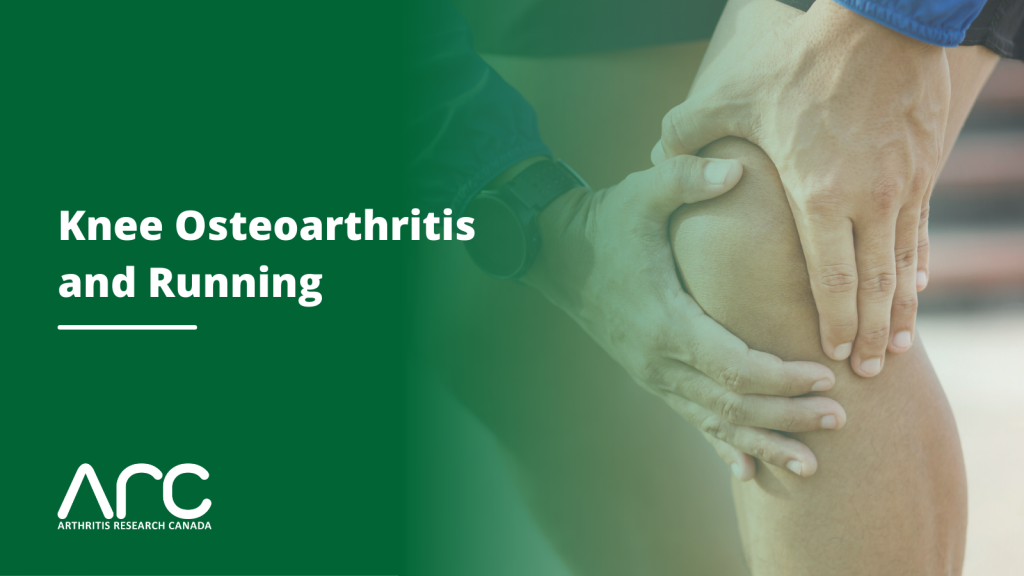
It’s estimated that over 4 million Canadians have osteoarthritis, a number that is projected to increase to 10.5 million by 2040. The knee is very often affected, and physical activity is widely recommended as an effective treatment in addressing knee osteoarthritis. While running is an activity providing many benefits to general health, many people with knee osteoarthritis stop running as they are unsure if it’s safe to continue.
Arthritis Research Canada’s scientist conducted an important research to dispel myths and grow knowledge about the impact of running on knee osteoarthritis.
Knee osteoarthritis is a leading cause of long-term disability in Canada and across the world, resulting in chronic pain and activity limitations, and eventually decreased quality of life. This condition also bears significant economic burden due to treatments, loss of productivity and indirect healthcare costs. Knee osteoarthritis is thought to develop because of a variety of risk factors including advancing age, obesity, previous trauma and genetics.
Regular physical activity can help in reducing the incidence of knee osteoarthritis and its economic burden, in part because of its beneficial effects on weight control. In addition, physical activity and exercise have been widely recognized as essential components of clinical management of people with knee osteoarthritis.
The pain and stiffness that comes with knee osteoarthritis, can make everyday activities difficult. So what about running and the impact on our knees? Below are some of the more frequently asked questions that may be helpful to understanding the severity of knee osteoarthritis and how that may affect your decisions about your own physical activity.
How will strength training and physiotherapy help prolong the life of my knee joint or delay surgery?
Muscle strength and progression of osteoarthritis are related. Proper strength training and building of strong muscles can potentially slow down the progression of knee OA.
What is good pain vs bad pain when running with knee osteoarthritis?
There should be no increase in knee pain during or after running. If your everyday pain level is 1-2/10 and remains the same level during and after running, it may not be a problem.
Should I wear a brace on my knee when I run?
It’s better to listen to your body, if it makes you feel better, why not? However a brace will not reduce the forces at the knee during running.
Are there different types of running? If so, is one better than another for knee osteoarthritis?
Yes there are ways to run that will decrease forces at the knee. Typically some suggestions would be to take short steps instead of long steps, and to try to “run softly” (with less impact / noise when landing).
Who could I turn to for more guidance on how to run properly if I am interested in running with my knee osteoarthritis?
It’s best to seek the help of a healthcare professional with specific training about running injuries.
For more information about knee osteoarthritis and running, click here.